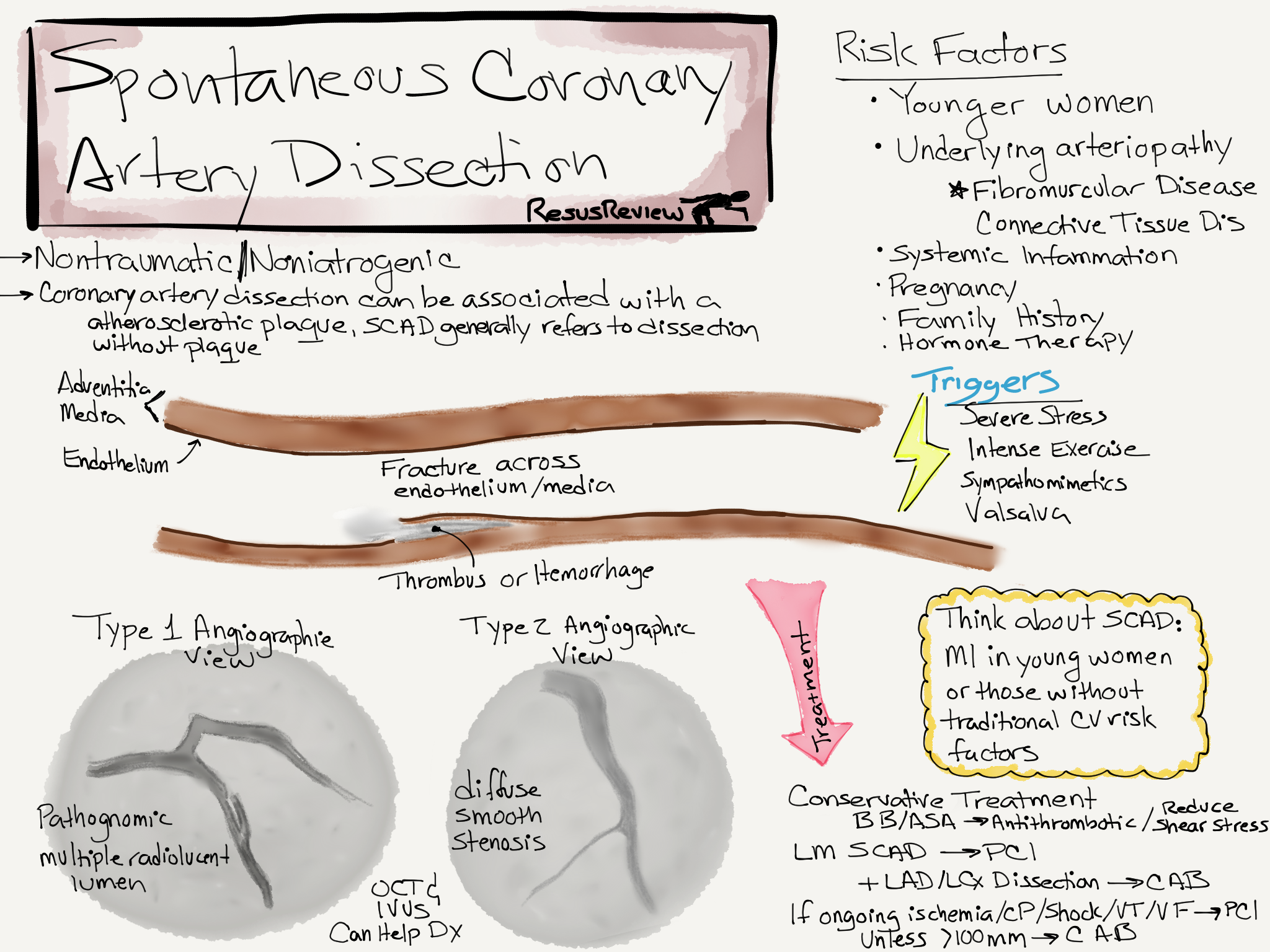Spontaneous coronary artery dissection (SCAD) is a non-traumatic and non-iatrogenic separation of the coronary artery wall that is now recognised as an important cause of myocardial infarction, especially in younger women or those without traditional cardiovascular risk factors. Angiographic diagnosis is aided by recognizing the appearance and can be aided by OCT and IVUS. Conservative management is generally recommended, however ongoing ischemia, shock, or ventricular arrhythmias should prompt consideration of PCI or coronary bypass.
A case discussion of case of SCAD requiring mechanical support that I wrote up was published in Emergency Medicine News.
References
- Saw J, Aymong E, Sedlak T, et al. Spontaneous coronary artery dissection: association with predisposing arteriopathies and precipitating stressors and cardiovascular outcomes. Circ Cardiovasc Interv 2014;7:645–55.
- Saw J. Coronary angiogram classification of spontaneous coronary artery dissection. Catheter Cardiovasc Interv 2014;84(7):1115-22.
- Saw J, Aymong E, Buller CE, et al. Non-atherosclerotic spontaneous coronary artery dissection: association with predisposing and precipitating conditions, and cardiovascular outcomes. J Am Coll Cardiol 2014;63:A4.
- Tweet MS, Eleid MF, Best PJ, et al. Spontaneous coronary artery dissection: revascularization versus conservative therapy. Circ Cardiovasc Interv 2014;7:777–86.
- Tweet MS, Hayes SN, Pitta SR, et al. Clinical Features, Management and Prognosis of Spontaneous Coronary Artery Dissection. Circulation 2012;126:579–88.

Contribute your thoughts.